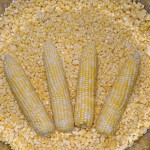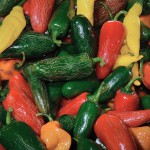Going vegan and eating an abundance of fruits and veggies can do wonders for your health. However, it can be difficult and can take planning when it comes to eating things before they go bad. Do you leave you veggies out on the counter? Do you keep your fruits in the refrigerator? In fact, different veggies require different storage. Of course, you’ll be eating a ton of them, but if you have an over abundance (if you grow them at home or you buy in bulk), then making the most of storing them properly will be extremely helpful. Keep reading for some great tips for short and long-term storage ideas to keep your veggies fresh for longer! Do you have a storage plan to keep things fresh? Tell me in the comments below!
Tips for Storing Produce and Keeping It Fresh
Storing produce in and out of the fridge
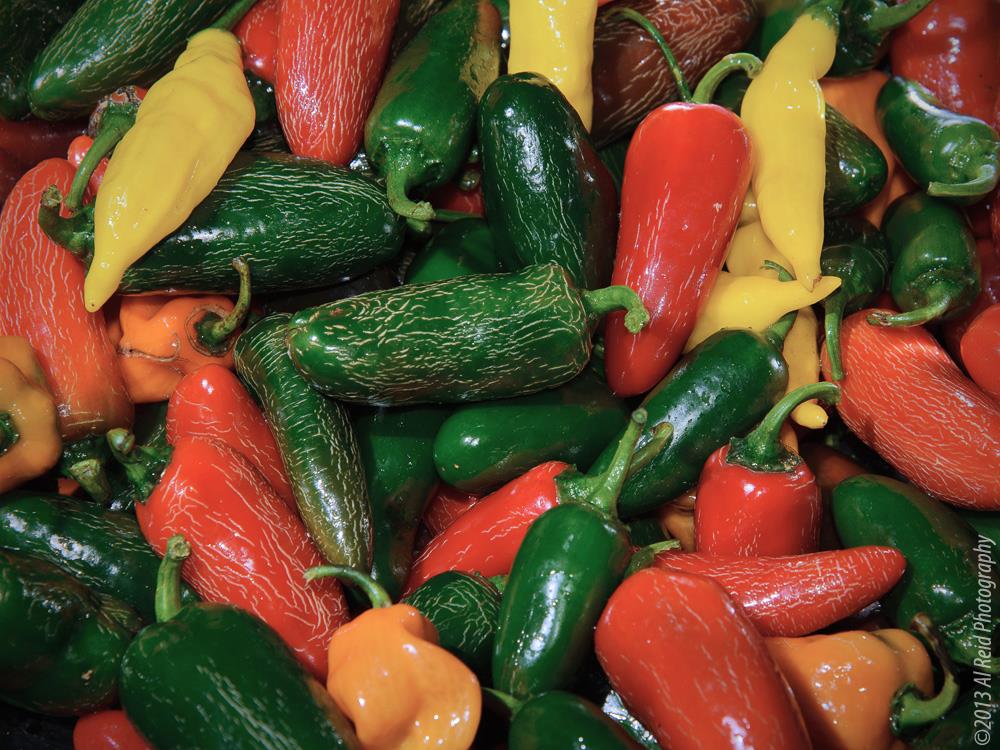 This is probably the most important (and easiest) tip for storing produce to ensure it stays fresh. Some fruit actually stays fresh longer if you keep it out on the counter, rather than in the refrigerator. Things like peaches, tomatoes, and avocados are better left out, as they lose moisture and flavor at low temperatures. In addition, some produce releases a gas that makes others go bad faster if they are stored together. Some examples of gas releasing fruits and veggies are: apples, apricots, and honeydew (which should all be refrigerated) and nectarines, pears, and plums (which should not be refrigerated). These should all be kept away from things like broccoli, brussels sprouts, cauliflower, carrots, and peppers. So, if you have two drawers in your refrigerator, take advantage of them and separate out the gas producers from the non-producers (and do the same in your pantry or on your counter). According to Vegetarian Times, this will greatly increase the shelf-life of your produce! This is definitely something I have had trouble with in the past; I just shove all my produce into one refrigerator drawer without thinking and then forget about it and end up throwing it away. With this information, though, it doesn’t need to be like that. Did you already know this? How do you implement it? Let me know!
This is probably the most important (and easiest) tip for storing produce to ensure it stays fresh. Some fruit actually stays fresh longer if you keep it out on the counter, rather than in the refrigerator. Things like peaches, tomatoes, and avocados are better left out, as they lose moisture and flavor at low temperatures. In addition, some produce releases a gas that makes others go bad faster if they are stored together. Some examples of gas releasing fruits and veggies are: apples, apricots, and honeydew (which should all be refrigerated) and nectarines, pears, and plums (which should not be refrigerated). These should all be kept away from things like broccoli, brussels sprouts, cauliflower, carrots, and peppers. So, if you have two drawers in your refrigerator, take advantage of them and separate out the gas producers from the non-producers (and do the same in your pantry or on your counter). According to Vegetarian Times, this will greatly increase the shelf-life of your produce! This is definitely something I have had trouble with in the past; I just shove all my produce into one refrigerator drawer without thinking and then forget about it and end up throwing it away. With this information, though, it doesn’t need to be like that. Did you already know this? How do you implement it? Let me know!
Storing produce in the freezer
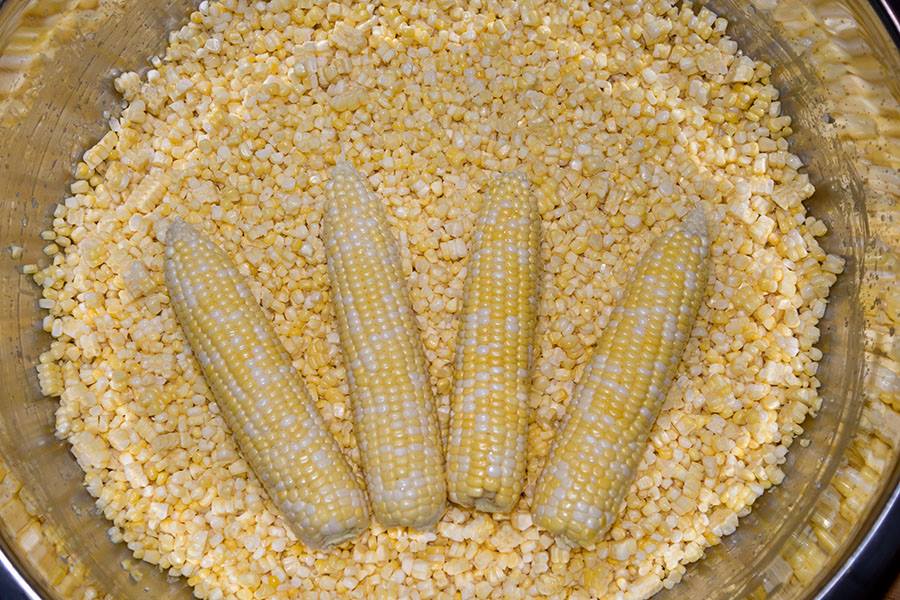 If you have a garden and everything ripens at once or you buy things in bulk, you may not be able to go through all your fruits and vegetables before they go bad. In this case, freezing is a great alternative for you. Most fruits and veggies can be frozen. One tip is to make sure the produce is at its peak ripeness when you freeze to ensure freshness and lock in the nutrients. For vegetables, you should blanch them before you put them in the freezer – according to Eating Well, this stops the enzymes that control ripening, so they’ll stay optimally ripe. You can do prep work before freezing, like chopping carrots or cutting corn off the cob (as pictured). Fruits should just be washed beforehand. Let them air dry before freezing them so they don’t all stick together. Then, make sure you have a good container that will keep out excess air to avoid freezer burn. We just use gallon-sized plastic bags most of the time because its easy, but most tupperware will work fine as well. Doing this is easy and better than just buying frozen veggies, because the quality is generally better. Freezing strawberries or cherries? Check out Caroline’s step-by-step instructions! Do you ever freeze your own veggies? Do you like this idea for storing produce?
If you have a garden and everything ripens at once or you buy things in bulk, you may not be able to go through all your fruits and vegetables before they go bad. In this case, freezing is a great alternative for you. Most fruits and veggies can be frozen. One tip is to make sure the produce is at its peak ripeness when you freeze to ensure freshness and lock in the nutrients. For vegetables, you should blanch them before you put them in the freezer – according to Eating Well, this stops the enzymes that control ripening, so they’ll stay optimally ripe. You can do prep work before freezing, like chopping carrots or cutting corn off the cob (as pictured). Fruits should just be washed beforehand. Let them air dry before freezing them so they don’t all stick together. Then, make sure you have a good container that will keep out excess air to avoid freezer burn. We just use gallon-sized plastic bags most of the time because its easy, but most tupperware will work fine as well. Doing this is easy and better than just buying frozen veggies, because the quality is generally better. Freezing strawberries or cherries? Check out Caroline’s step-by-step instructions! Do you ever freeze your own veggies? Do you like this idea for storing produce?
Storing produce in jars
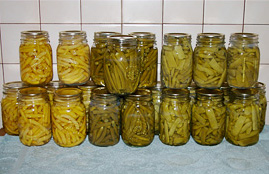 Canning can be a huge space-saver if you don’t have a lot of refrigerator or freezer space, but it can take practice and time to get right. If done properly, food will stay fresh for at least a year, and can be stored almost anywhere, so it’s a great idea for storing produce. Generally, the food is pre-cooked before putting it in the jar (though I’d suggest cooking it slightly less than usual, as the canning process can turn fully-cooked produce mushy). Then, the lid is placed on the jar and it is boiled. After it is removed (with a jar-lifter, preferably!), they will seal with a loud pop after sitting for a few minutes. Doing it this way will create an airtight seal to ensure freshness. You can store all sorts of things in jars, from chopped tomatoes to green beans to pickles. If you want to give it a try, here’s a great beginner’s guide to canning to help you!
Canning can be a huge space-saver if you don’t have a lot of refrigerator or freezer space, but it can take practice and time to get right. If done properly, food will stay fresh for at least a year, and can be stored almost anywhere, so it’s a great idea for storing produce. Generally, the food is pre-cooked before putting it in the jar (though I’d suggest cooking it slightly less than usual, as the canning process can turn fully-cooked produce mushy). Then, the lid is placed on the jar and it is boiled. After it is removed (with a jar-lifter, preferably!), they will seal with a loud pop after sitting for a few minutes. Doing it this way will create an airtight seal to ensure freshness. You can store all sorts of things in jars, from chopped tomatoes to green beans to pickles. If you want to give it a try, here’s a great beginner’s guide to canning to help you!
Now You’ll Have No Problem Storing Produce!
Follow these simple tips and you’ll be set! And a last tip? Make sure to look for recipes that include whatever veggies you have on hand, so you can make the most of them! Since The Monthly Dish selects recipes that include in-season veggies, using this tool will help you use up most of your fresh veggies (and is sure to be delicious!). Since none of your produce will go to waste, you’ll save tons of time and money. According to Vegetarian Times, the average family wastes about 14% of the food they buy, at an average annual cost of $600! By storing all of your produce properly, you’ll really be helping to reduce food waste. In fact, you’ll be producing next to no waste at all, making vegan practical (and putting your omni friends to shame). Plus, your meals will be extra tasty if all your food is at its peak ripeness! Happy storing!
*Photos courtesy of Al Reid (alreidphotography.com)

